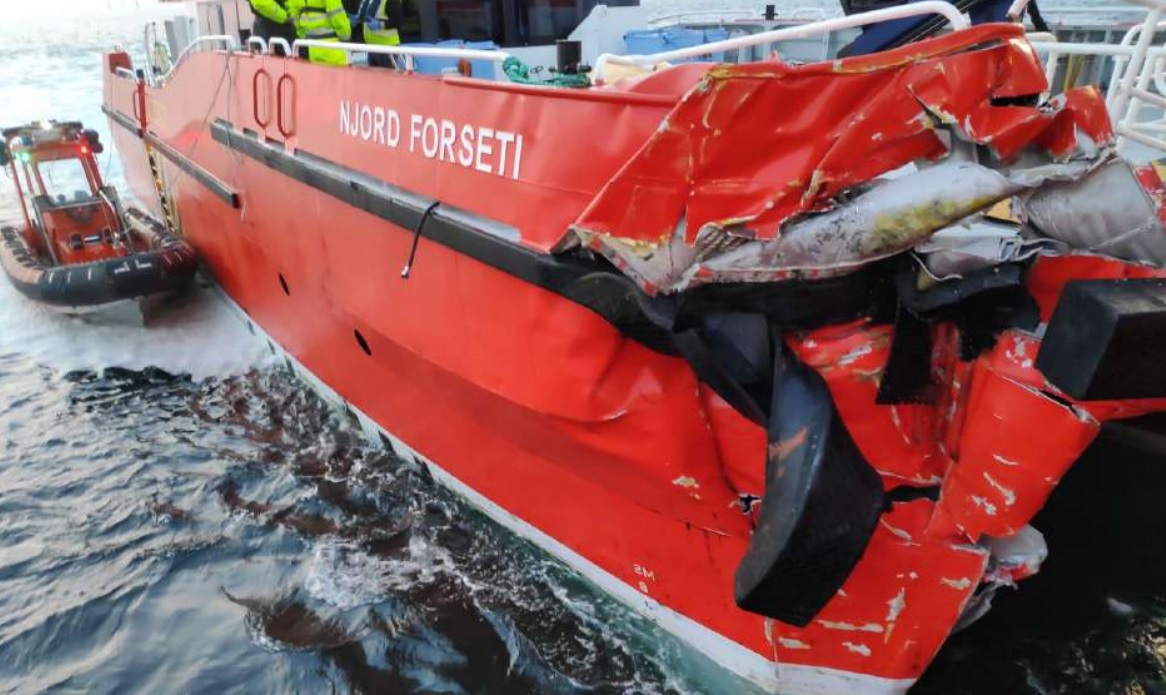
(www.MaritimeCyprus.com) The Jersey Maritime Administration has published a report into its investigation of the causes of an allision between a windfarm support vessel and a windfarm tower in the Southern North Sea on 23 April 2020.
What went wrong?
Shortly after 1800 local time, the vessel was released from duties on a windfarm and at 1811 departed for the return passage to port. Aboard the vessel were three crew members, and one windfarm technician who was being transferred ashore. Sea conditions were calm with light winds and low swell. The weather was fair with good visibility.
Whilst transiting between windfarms at approximately 20 knots, Njord Forseti hit a turbine tower. The impact resulted in serious damage to the vessel. Two crew members were evacuated by air to the hospital, and the third was required to have a subsequent medical examination. Immediate assistance was provided by a nearby offshore construction vessel. The Njord Forseti returned to port under her own power with temporary crew members provided by a sister vessel.
Findings
The Jersey Maritime Administration report drew the following conclusions:
- For an indeterminate period between departure from the windfarm until the incident occurred, the vessel crew were not keeping a proper lookout as required by Rule 5 of the International Regulations for Preventing Collisions at Sea (COLREGS);
- The primary reason why a proper lookout was not being kept was because the Master was distracted from his primary role;
- It is possible that the Master was distracted from his primary role as he may have been adjusting of settings on the VHF radio which is mounted immediately to starboard of his seat. However, this has not been positively determined and distractions caused by other means cannot be ruled out;
- At the time of the incident, the vessel was not following the established passage plan from the windfarm to port, but was undertaking an alternative route. Whilst this route was safe, ineffective monitoring of the vessels track, position and proximity to navigational hazards contributed to the incident.
Recommendations
The Jersey Maritime Administration report made the following recommendations:
- There should be renewed emphasis on the importance of compliance with COLREGS, and particularly Rule 5;
- Identify tasks, equipment and functions that may give rise to possible distractions for the person having the conduct of a vessel whilst underway, and implement measures to ensure that the safe conduct of the vessel is not impaired by these or other factors;
- Review the methods by which Masters monitor the safe progress of a vessel’s passage and make changes as necessary, including where necessary, additional training;
- Under the Workboat Code, other than the need for at least one person to ensure the safe conduct of the vessel whilst underway, there is no specified minimum number of (deck) watchkeepers required. Operations should be assessed and policies updated where necessary to ensure that the wheelhouse is always sufficiently and appropriately manned. Where appropriate, specific guidance should be provided to the Master in exercising his / her judgement in setting the wheelhouse manning level during the course of a voyage (IMCA emphasis);
- Develop principles and techniques of crew resource management (CRM) to ensure that whilst underway the conduct of the vessel is carried out in the most effective and efficient means possible.
And because nothing speaks clearer than an image or a video, pls watch the relevant CCTV video below:
You can download the full investigation report below:
Source: Jersey Maritime Administration
For more Maritime Accident Investigations, CLICK HERE














